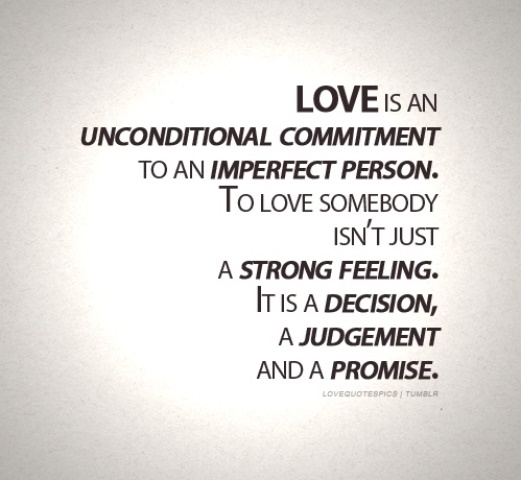Summer is here and there’s much more to be decided than which print on those sundresses tucked away in some remote corner of your closet need to be shown the sun! With the hot months coming in at full speed, it might be the time for an internship, a post-graduation move for a job or simply shifting base for higher studies. But is it really all that simple? Could being in different states or countries come as easy on your relationship with your significant other as buying those summer sandals, planning that itinerary or laying by the pool? I guess not! No matter what they say about ‘time apart’ being healthy for a relationship, the truth is ‘time apart’ is still TIME APART. A long distance relationship is much more than different continents, different time zones, Skype dates, and frequent trips. It is missed calls, miscommunication and potential gaps of communication, understanding, and sometimes, even disparity in the investment toward the commitment. As such, the distance in a long distance relationship is not easy to manage – not without a mammoth investment of patience, endurance, commitment, effort, and of course, love! And sometimes, just sometimes, even these aren’t quite enough!
Suggested read: The epic guide to making your long distance relationship thrive
So, how does one know if agreeing to go long distance is the right step? How does one decide whether their relationship can survive the rigors of a long distance equation? How does one know if a long distance dynamic is conducive or toxic to the chemistry they share with their now-geographically-close partner? How does one know if the long distance relationship is going to work? Can long distance relationships work? Or is it doomed to fail? How does one know?
Here are 15 signs that can help you take the call:
1. Communication pattern
Image source: Shutterstock
Communication is one of the most important aspects of any healthy relationship. And the problem of being able to communicate effectively can only be exacerbated by distance. If you have problems communicating with your partner now and do not seem to understand each other’s needs when you can still see each other’s expressions and gauge the intonation of a particular reaction, it is going to be infinitely harder when texts and blurry Skype calls infiltrate the scene. Establishing a set pattern or habits of communication is necessary. If you have troubles now, it is unlikely that your long distance relationship is going to thrive. However, if you have a solid communication with your partner now, your long distance boat might be able to sail through. Patrick Wanis, a human behavior and relationship expert, says it’s important to figure out how you communicate love. He says that if you’re bad at communicating or you misunderstand each other’s needs, “you’re going to feel abandoned, neglected and unloved in a long-distance relationship.”
2. Accessibility pattern
Image source: Shutterstock
This one is an important factor to consider before taking a decision on whether or not a long distance relationship is the right option for you. If you depend on your partner to be your one-stop solution kiosk or your go-to person for anything – someone you can share meals with in between wonky work hours or someone you can run for a hug at the end of a long tiring day, then you might want to reconsider going in for the long-distance step. Relationship expert Dr. Carole Lieberman, M.D., acknowledges the problem of accessibility in a long-distance relationship.
“If you are the type who likes your boyfriend to be available in person 24/7 — for a cuddle or a cup of coffee — you would not be happy with a long-distance relationship unless he has access to a private plane and can fly to you at a moment’s notice,” she says.
Wanis agrees, saying,
“If your identity becomes so strongly attached and connected to this person, when you’re apart from him or her, you’re going to feel lost and confused, like you’ve lost your identity.”
If you cannot remember how your time flew before your partner came into your life, long distance might not work out for you.
3. Expectations
Image source: Shutterstock
For most long distance relationships, distance isn’t quite the most daunting part. The real challenge is the discrepancy between your expectations from the relationship and the reality of your situation. Having a clear understanding of what it is that the partners expect from the relationship and communicating the same is key. If a partner wants the other to Skype every night but there needs to be room made for family too, it might not be possible. Similarly, having mutual agreement about expressing one’s love and affection is also an integral component for long distance relationships. Clarifying your expectations from the relationship, right since the start, is compulsory. It helps weed out any potential discrepancy between what one expects and gets.
4. The physical element
Image source: Shutterstock
The physical aspect of a romantic relationship is as important as any other. If it is difficult for either partner to stay abstinent for long periods, a long distance relationship might not be their cup of tea. Lieberman agrees,
“If you like to have sex and don’t want to be abstinent for the summer or longer, then a long-distance relationship isn’t workable unless you and your boyfriend sincerely believe that ‘what happens during separation stays in separation.”
Of course, monogamy isn’t a hard-and-fast for many, but it still is a dominant norm. If you are worried about your significant other cheating on you, then you may want to reconsider the option of putting those miles betwixt you both – which, then, brings me to my next contention.
Suggested read: 15 surprisingly simple relationship advice to bring you closer
5. Level of trust
Image source: Google, copyright-free image under Creative Commons License
If you already have trust issues with your partner or feel that the possessive streak in you might spell trouble for the two of you when there’s an ocean between you, you might have a potent problem and would want to change your mind/approach about pursuing a long distance relationship. Jealousy stems from insecurity and the fear of not being good enough. One can be rooted out with trust and acceptance of the line that demarcates the possessive from the obsessive, the other with a consistent attempt at introspection, self-awareness, and a growth vis-à-vis which the gaps between self-worth ideals and reality can be bridged. Dr. Lieberman confirms the destined failure of a long distance relationship that is wrought with jealousy:
“The jealous partner will suspect infidelity, even if none is occurring. If a partner is late answering a text… then the jealous partner will start dreaming up all kinds of scenarios as to what betrayal is going on.”
This right there is unhealthy, making you wonder – can long distance relationships work?
6. Stage of the relationship
Image source: Google, copyright-free image under Creative Commons License
If you are in the early stages of a relationship and are just getting to know each other when the harbinger of ‘distance’ arrives, you might want to steer clear of the ‘let’s try long distance and see where it goes’ situation. A long distance relationship needs a relationship plan or a long-term vision to keep both partners engaged and committed to working toward a goal they both decidedly want! In case the possibility of a long distance equation looms large when you have been together for a considerable span of time, know and understand each other and have forged a solid foundation for a future that you plan to live together, a long distance relationship you cannot avoid might just be the logical step.
7. Coping pattern
Image source: Shutterstock
This is an element that one gauges until one braves the distance. However, an introspective engagement with one’s ability to deal with ‘time spent apart’ during short, temporary separation phases might be able to give a good grasp. If one’s response to such periods is becoming reclusive, feeling the pangs of loneliness, and a state of depression, a long distance relationship might be unhealthy for you. However, such an acute level of dependence may also show that you are in an A-frame relationship and are too dependent on your partner. Here, forging a separation might also come in as a heavy blow to the identity that you haven’t hithertofore seen as a separate entity than that of your partner’s or that of the two of you together. On the other hand, if you are able to be in an M-frame equation wherein you balance dependence and independence to form an interdependent relationship, you might be ready to take the big step. An accurate analysis of your coping pattern is necessary to gauge if an LDR is conducive to your bond.
Suggested read: 15 unique problems only long distance couples can understand
8. Attitude toward the relationship
As already mentioned, a casual relationship that is still wanting to ‘see where it goes’ is unlikely (if not impossible) to survive when struck by the long distance dart. Some sort of agreement over a potential future for the relationship, a viable plan or at least, a minimalistic set of relationship goals are essential to give both partners exhortation to work toward the common goal, when separated by distance.
9. Commitment
Image source: Google, copyright-free image under Creative Commons License
If you aren’t already in a committed equation, it only means you are still debating if the relationship has a viable future. In such a scenario, complicating the uncertainty with distance might only serve to exacerbate the vacillating contenders in your mind. Of course, if you are anything of a romantic, you might want to believe that the ‘hour of separation’ might tell you if the relationship is truly ‘it,’ but it is important to consider how committed you are to making it work, before you opt for the long distance dance. You might go off-rhythm and trip on your own toes, if you cannot make the right moves. Commitment to the relationship entails making the necessary efforts to make it work. All the more so, when you are separated by miles.
10. Interdependence
Image source: Shutterstock
If you are able to retain your own identity as an individual while feeling committed to the relationship and your partner, despite the distance, you are in a healthy, interdependent, long distance relationship. Again, there is no way to gauge this other than to be in one. However, if you have found yourself giving your partner their space whilst receiving yours even when you lived hours away from each other and found ample time for friends, family and passion besides living lovely moments together, it is highly likely that your long distance relationship will stand the test of time.
11. Level of exclusivity
Coming to a mutual agreement about the degree of exclusivity in your relationship is important before going long distance. From setting boundaries about interaction with members of the opposite sex to agreeing upon each other’s primary language of love to deploying them to build effective communication habits, there has to be a mutual agreement on every facet of the long distance dynamic, trivial or significant.
12. Endurance
Image source: Pixabay, under Creative Commons License
If your tolerance levels for missed calls or unanswered texts is zilch or low, you might not be able to brave the rigors of a long distance dynamic. A long distance relationship takes immense patience, endurance and commitment besides gallons of trust, faith and effort to sustain itself.
13. Disposition
Image source: Shutterstock
If small issues flare up into heated arguments between the two of you, it is unlikely that your LDR is going to thrive. You need to have an optimal understanding of self and a heightened level of self-awareness to gauge how you deal with tense situations. When the going gets tough, are you likely to get tough and take it on or simply dart toward the exit? An understanding of how a sense of balance trickles in when one partner seems to be flying off the handle is important. An analysis of the disposition and temperaments of either partner is going to give a glimpse about whether the big decision merits a ‘yes’ or a firm ‘no.’
Suggested read: Does a long distance relationship spell the end of the road?
14. A relationship vision
Image source: Google, copyright-free image under Creative Commons License
This one has been reiterated too often. A long distance relationship needs a relationship plan or a long-term vision to keep both partners engaged and committed to working toward a goal they both decidedly want!
Always remember “Distance is not for the fearful, it is for the bold. It’s for those who are willing to spend a lot of time alone in exchange for a little time with the one they love. It’s for those knowing a good thing when they see it, even if they don’t see it nearly enough…”
Having said that, it is important to consider all of these facets before taking a step in the direction of a long distance relationship so that you can be in one that can go all the distance! 
Featured image source: Google, copyright-free image under Creative Commons License
























